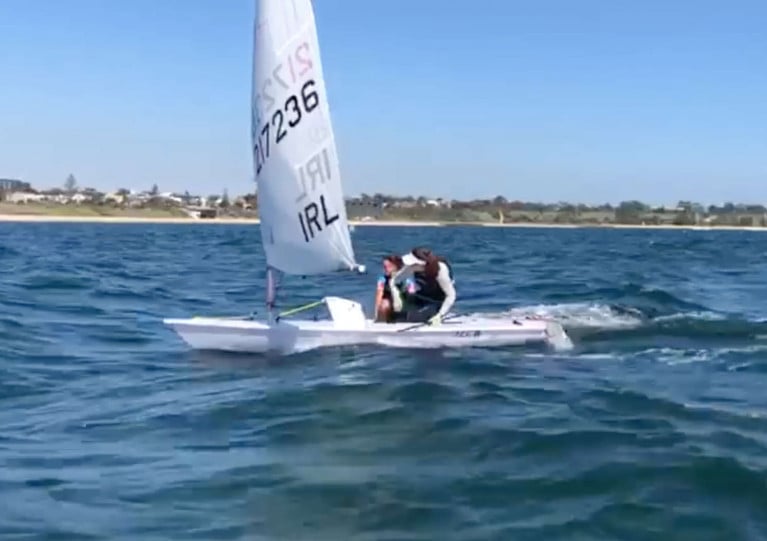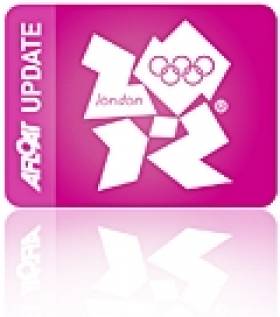Displaying items by tag: Sonia O'Sullivan
The Heat Is On For Ireland’s Quartet Of Laser Radial Sailors Competing For Tokyo Olympic Spot
In her latest column for The Irish Times, athletics great Sonia O’Sullivan meets the four women in contention for Ireland’s sole Laser Radial spot at the Olympic Games in Tokyo this summer.
After frustrations in her attempt to qualify in the two-handed 49erFX class, Annalise Murphy is back in the boat with which she won silver at the 2016 Olympics — Ireland’s strongest Olympic sailing result to date.
But this time there is tough competition from three women who were still coming up when she was racing for that medal in Rio — namely Aisling Keller, Aoife Hopkins and 15-year-old Eve McMahon.
All four have been training together in Melbourne, Australia since the start of the year, ahead of the Laser Radial World Championship (starting tomorrow, Friday 21 February) which will be the first of three chances between now and April for one of them to secure that coveted spot.
“Think about how that must be for them,” writes Sonia. “They know that only one of them will go to Tokyo so they wouldn’t be human if they didn’t have some sort of selfish instinct in them. It would be only natural for them to keep little bits and pieces that they’re learning back for themselves to give them a better chance of being the one who gets the spot on the boat.
“But they also know that the more they push each other, the better they make each other. And the better they make each other, the greater chance of a medal for Ireland and a better all round result for Irish sailing.”
Sonia also gets out on the water with Annalise to experience first-hand the speed and excitement of the Laser Radial — and the rush Annalise and her fellow challengers will be feeling when the training is done and the race is on.
#OLYMPIC TORCH RELAY – President Michael D.Higgins welcomed the London 2012 Olympics Torch Relay for the first time to Ireland in Howth Harbour, where the first torch-bearer Cillian Kirwin from St Fintan's High School in Sutton had the honour of running with the flame, reports Jehan Ashmore.
Kirwin, a 15 year-old cross country champion was greeted by the President. Also attending where Lord Sebastian Coe of the London Olympics, Sir Craig Reedie of the International Olympic Committee (IOC) representing Jacques Rogge, Pat Hickey President Olympic Council of Ireland (OCI) and Mayor of Fingal Cllr Gerry McGuire, aswell as Carál Ní Chuilín, Sports Minister of Northern Ireland who accompanied the relay.
Hundreds of locals, excited schoolchildren and visitors alike enjoyed the festive atmosphere at the fishing harbour where the Olympic Council of Ireland headquarters are based. Their premises formerly Howth House, built around 1807 was where the supervisor of Howth Harbour resided.
Today's historic event with its detour to the republic is part of a 70-day London torch relay tour in the UK. Earlier this morning the torch had crossed the border where it was passed between two former Olympic boxers, Belfast's Wayne McCullough and Dubliner Michael Carruth.
The President told the large crowd that the flame's arrival in Ireland symbolised the growing closeness of the relationship between the UK and Ireland. The President spoke of the Olympics "where sport builds bridges" and of friendship and fairplay.
After a brief ceremony the Olympic hymn was sung by local children from Scoil Mhuire Primary School as the flame was whisked away under Garda escort to Dublin. The torch tour included Croke Park, the Garden of Remembrance, GPO and Trinity College.
When the torch reached the Liffey, it was carried across the Samuel Beckett Bridge by former international soccer player Paul McGrath to the Grand Canal Theatre. At the same time Dublin Port Company tug sisters Shackleton and Beaufort paid a tribute by firing powerful water jets high into the sky.
The sporting spectacle drew large crowds along the bridge and office workers looked down from their quayside offices to witness the torch head for its final destination in St. Stephens' Green.
Irish team's Chef de Mission Sonia O'Sullivan became the final torch-bearer. The celebrations culminated when she performed lighting an Olympic cauldron to commemorate the visit.






























































